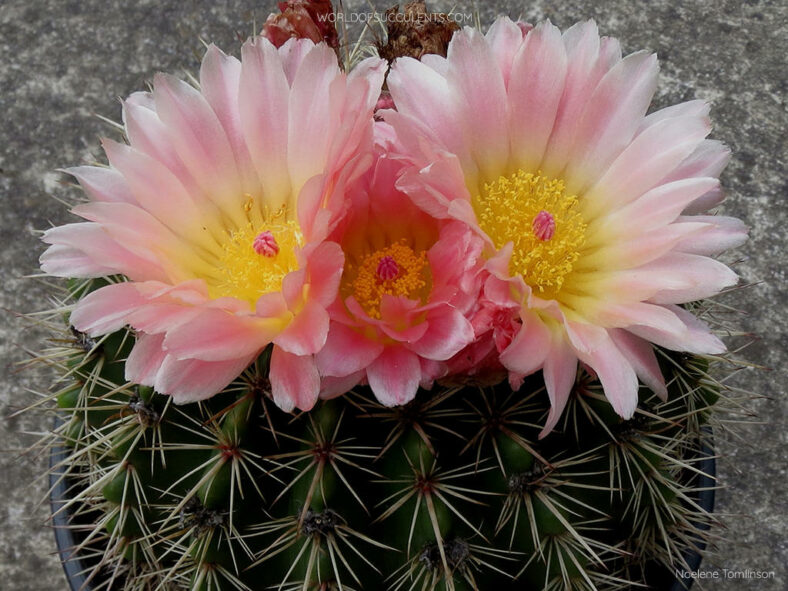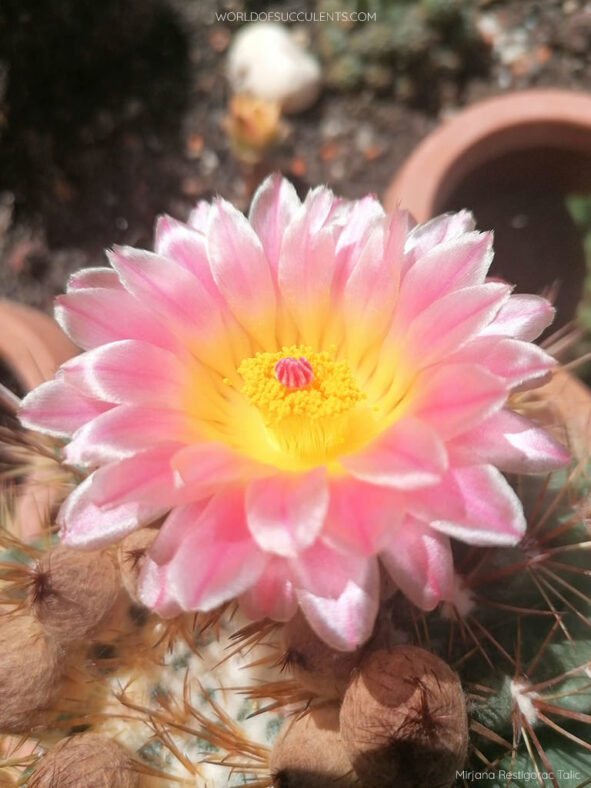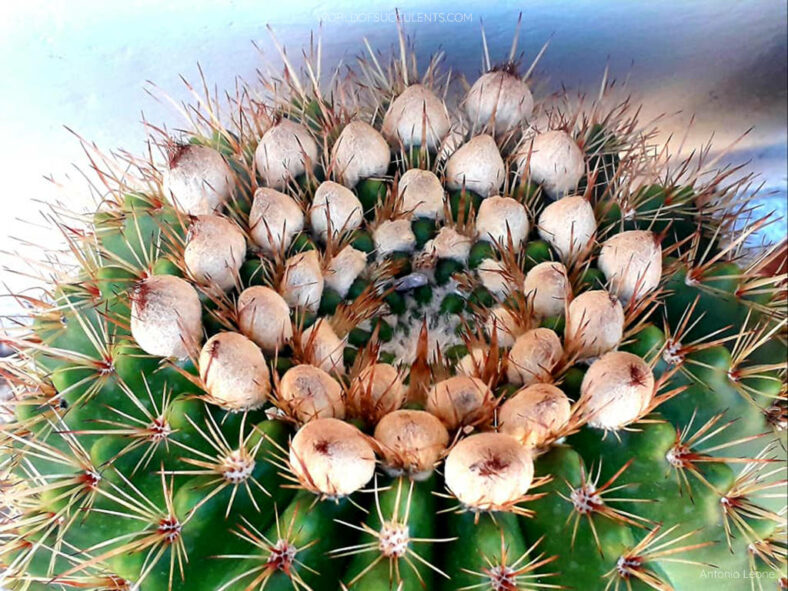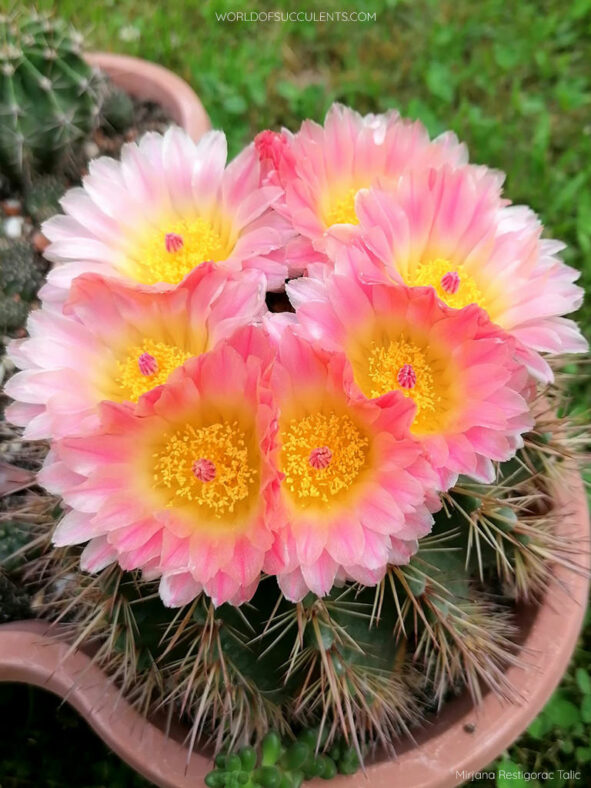Scientific Name
Parodia roseolutea (Vliet) Hofacker, A.S.Oliveira & R.Pontes
Synonym(s)
Notocactus herteri f. roseoluteus, Notocactus herteri subsp. roseoluteus, Notocactus roseoluteus
Scientific Classification
Family: Cactaceae
Subfamily: Cactoideae
Tribe: Notocacteae
Genus: Parodia
Etymology
The specific epithet "roseolutea (pronounced roh-see-oh-LOO-tee-uh)" means "pink-yellow, rosy-yellow" and refers to the bi-colored flowers.
Origin
Parodia roseolutea is native to Uruguay. Although it was published as a separate species in Kakteen And. Sukk. 71: 344 (2020), it is still generally listed as a form of Parodia mammulosa.
Description
Parodia roseolutea, formerly known as Notocactus roseoluteus, is a small cactus with a spherical, green to grayish-green stem with 15 to 18 strongly tuberculate ribs lined with clusters of needle-like spines. As it slowly grows, the solitary stem becomes short-cylindrical and can reach a height of 8 inches (20 cm) and a diameter of 7.2 inches (18 cm). The woolly areoles are positioned between the tubercles, each bearing eight radial and four central spines. The radial spines are whitish with a maroon tip and can grow up to 0.5 inches (1.2 cm) long, while the central spines are usually darker and can grow up to 1 inch (2.5 cm) long.
During the spring, Parodia roseolutea produces abundant, shiny salmon flowers with a yellow center. The flowers have a short tube covered with white wool and brown bristles and appear at the top of the stem. They can reach up to 3.2 inches (8 cm) in diameter.

How to Grow and Care for Parodia roseolutea
Light: Parodia roseolutea likes slightly less sun than other cacti and prefers partial shade during the hottest part of the day. It can handle direct sunlight in the morning and afternoon. If you grow this cactus indoors on a sunny windowsill, rotate it every two weeks to encourage balanced growth. If possible, move the cactus outdoors from spring to fall.
Soil: Good drainage is crucial for a healthy plant. You can use commercial soil for cacti or make your own well-draining mix.
Hardiness: This cactus thrives in warm, desert-like conditions and will not survive a hard frost. If there is a risk of freezing temperatures, it is best to plant it in a container that can be brought indoors. Parodia roseolutea can withstand temperatures as low as 25 (-3.9 °C). USDA Plant Hardiness Zones 9b to 11b, 25 to 50 °F (-3.9 to 10 °C).
Watering: Water deeply during its growing season, but allow the soil to dry before watering again. During winter, when this cactus is dormant, provide water only enough to keep the soil from becoming bone dry.
Fertilizing: While not necessary, Parodia roseolutea will respond well to a low-balanced soluble fertilizer diluted to half the recommended strength. However, suspend feeding in winter.
Repotting: If the plant grows in a container, repot it as needed in spring or early summer. Ensure the soil is dry before repotting, and always place the plant in a container with drainage holes.
Propagation: Since it rarely produces offsets, this cactus is propagated by seed. For best results, sow the seeds in spring.
See more at How to Grow and Care for Parodia.
Toxicity of Parodia roseolutea
Parodia roseolutea is non-toxic to humans or animals.
Links
- Back to genus Parodia
- Succupedia: Browse succulents by Scientific Name, Common Name, Genus, Family, USDA Hardiness Zone, Origin, or cacti by Genus
Photo Gallery
Click on a photo to see a larger version.


